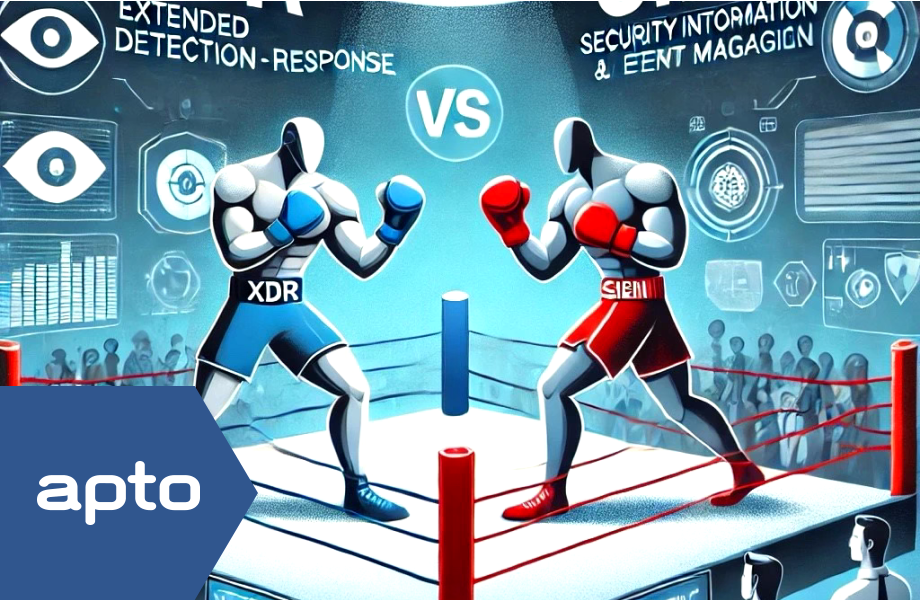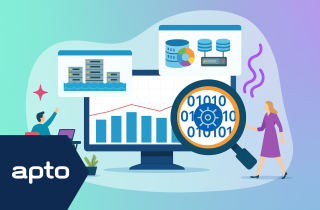
In the cybersecurity landscape, the debate over the use of Security Information and Event Management (SIEM) versus Extended Detection and Response (XDR) systems has gained significant traction. It’s come about in some questions from our clients, with the recent Cisco Splunk acquisition and the recent Splunk .conf reference to product integrations see our other blog.
Each solution offers distinct advantages and disadvantages, making the decision between them a nuanced one for organisations. Let’s dive into a detailed exploration of SIEM’s benefits/shortcomings, and whether it’s time to replace it with XDR or augment it; a question of many clients.
One note before continuing this is a SIEM vs XDR article, many SIEM vendors offer full security solutions e.g. Microsoft and Google, that will provide a solution stack incorporating many security functions RBAC, IAM, Observability, DSPM, Data Security, to name a few and of course XDR!
This therefore muddy’s the water somewhat, when trying to debate SIEM vs XDR solely. We’ll write an article on that another time and how cloud vendors approach this.
Today we are addressing a common question; Why SIEM?, Shall we just have an XDR?, Or some variant of this question.
SIEM: A Proven Security Solution
SIEM systems have been the cornerstone of cybersecurity for many enterprises, providing organisations with a centralised approach to managing and analysing security-related data. These SIEM platforms aggregate security event logs from multiple sources such as firewalls, antivirus systems, network devices, servers and even cloud services. By correlating these logs, SIEM enables security teams to identify suspicious activity, generate alerts and create comprehensive reports for compliance purposes.
Key Advantages of SIEM:
- Centralised Log Management: SIEM offers unparalleled visibility into an organisation’s security environment by centralising log data from various sources into one platform. This provides a comprehensive view of the entire network’s security posture, making it easier for analysts to detect anomalies.
- Compliance and Reporting: SIEM systems excel at meeting regulatory compliance needs. For organisations dealing with stringent compliance requirements like GDPR, HIPAA, or PCI DSS, SIEM offers structured reporting and audit trails, making it indispensable for meeting governance obligations
- Incident Investigation and Forensics: SIEM platforms often have a robust ability to help security analysts investigate incidents after they occur. They allow organisations to search through historical logs to piece together the events leading up to and following an attack. They offer correlated data search capabilities using sophisticated data models, some with risk based notifications functionality.
However, SIEM systems are not without their challenges. While they provide broad visibility and compliance, their complexity and resource demands often lead to inefficiencies. There is a consensus in some communities that emphasise that SIEM systems may struggle to detect advanced attacks that evade traditional event correlation techniques, leaving organisations exposed to sophisticated threats.
Key Disadvantages of SIEM:
- Complexity and High Costs: One of the major drawbacks of SIEM is the complexity involved in its deployment and ongoing management. SIEM platforms require continuous fine-tuning, constant updates to threat intelligence feeds, and highly skilled personnel to ensure their effective operation. The high costs of licencing, storage for log data, and staff training make SIEM a significant investment for organisations.
- False Positives and Alert Fatigue: SIEM systems can generate an overwhelming number of alerts, many of which are false positives. Security teams often find themselves inundated with notifications, making it difficult to discern which alerts require immediate attention. This can lead to alert fatigue, where critical threats are overlooked or delayed in response.
- Reactive Rather than Proactive: SIEM is primarily a log-based system, meaning that it often detects incidents after they have already occurred. While it provides valuable insights into past events, it is not designed to prevent attacks in real-time. Organisations relying solely on SIEM may find themselves lagging behind attackers who utilise advanced techniques. There is observability integration and add-ons available from SIEM providers.
XDR: The Next Generation of Threat Detection
In contrast to SIEM, Extended Detection and Response (XDR) represents the next evolution of cybersecurity, integrating multiple layers of security – such as endpoint detection, network monitoring, and cloud security – into a single platform. XDR aims to enhance threat detection and response by providing better correlation between disparate security data sources and automating the detection of advanced threats. We are going to avoid heading down the proverbial rabbit hole of XDR definitions today! We may cynically just substitute EDR for XDR for the rest of the article if you like.
Key Advantages of XDR:
- Comprehensive Threat Detection: XDR goes beyond just logs, integrating data from across the security stack, including endpoints, email, network traffic, and cloud environments. This holistic approach enables organisations to detect threats that move across multiple attack vectors, making it harder for advanced attackers to evade detection.
- Automated Responses and Efficiency: XDR leverages machine learning and automation to detect and respond to threats in real time. This automation not only reduces response times but also reduces the burden on security teams by handling lower-level threats autonomously. Security analysts can then focus on investigating more sophisticated attacks.
- Reduced False Positives: One of the primary advantages of XDR over SIEM is its ability to reduce false positives. By correlating data across multiple sources and applying advanced analytics, XDR is better at filtering out benign activity and identifying true security threats.
Despite these advantages, XDR is not without limitations. For one, it is a relatively new technology compared to the well-established SIEM platforms, and not all organisations may be ready to adopt it just yet.
Key Disadvantages of XDR:
- Lack of Maturity: As a newer technology, XDR lacks the maturity and widespread adoption of SIEM. While many XDR solutions are rapidly evolving, there may still be some gaps in capabilities compared to traditional SIEM, particularly when it comes to compliance reporting and log retention.
- Vendor Lock-In: Many XDR solutions are tied to specific vendors, meaning organisations may be locked into a particular ecosystem of security tools. This can limit flexibility and integration options if the organisation is already using a diverse set of security technologies.
Should You Abandon SIEM for XDR?
The critical question for many security professionals is whether to replace their existing SIEM system with XDR or use them in tandem. The answer largely depends on your organisation’s current needs, existing infrastructure, and resource availability.
Use Cases for SIEM:
- Mature Security Operations: If your organisation already has a well-established security operations centre (SOC) with a SIEM system in place, abandoning it in favour of XDR may not be necessary. SIEM excels in environments where regulatory compliance, long-term log storage, and historical incident investigations are paramount.
- Large Enterprises: For large enterprises with a multitude of data sources and stringent compliance needs, SIEM provides the necessary tools to meet regulatory requirements and conduct forensic investigations.
Use Cases for XDR:
- Smaller Organisations or Lean Security Teams: XDR is especially valuable for smaller organisations or those with limited security personnel. Its automation capabilities reduce the need for large security teams and lower the operational complexity typically associated with SIEM.
- Advanced Threat Detection: If your organisation is concerned about advanced, multi-vector attacks, XDR may offer superior detection capabilities compared to SIEM alone. XDR’s ability to correlate data across multiple sources ensures that sophisticated attacks do not slip through the cracks.
Conclusion
Ultimately, the decision is not as binary as choosing between SIEM or XDR. Many organisations may benefit from a hybrid approach, where SIEM is used for compliance, advanced correlated search capabilities and long-term log storage while XDR is layered on top to provide enhanced detection and automated response. This combination allows organisations to leverage the strengths of both systems, resulting in better security outcomes overall.
For those just starting to build their security infrastructure, XDR may provide a more efficient, streamlined solution without the complexity of SIEM. However, for mature organisations with established security operations, complementing SIEM with XDR could provide the best balance between compliance, visibility, and advanced threat detection.
-

26 June 2025
SIEM Platform Management
-

26 June 2025
Using Your Data Effectively in Enterprise Security
-

26 June 2025
Data Discovery Process
See how we can build your digital capability,
call us on +44(0)845 226 3351 or send us an email…
